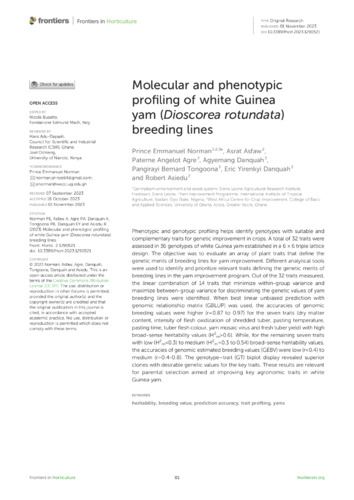Molecular and phenotypic profiling of white Guinea yam (Dioscorea rotundata) breeding lines
Abstract
Phenotypic and genotypic profiling helps identify genotypes with suitable and complementary traits for genetic improvement in crops. A total of 32 traits were assessed in 36 genotypes of white Guinea yam established in a 6 × 6 triple lattice design. The objective was to evaluate an array of plant traits that define the genetic merits of breeding lines for yam improvement. Different analytical tools were used to identify and prioritize relevant traits defining the genetic merits of breeding lines in the yam improvement program. Out of the 32 traits measured, the linear combination of 14 traits that minimize within-group variance and maximize between-group variance for discriminating the genetic values of yam breeding lines were identified. When best linear unbiased prediction with genomic relationship matrix (GBLUP) was used, the accuracies of genomic breeding values were higher (r=0.87 to 0.97) for the seven traits (dry matter content, intensity of flesh oxidization of shredded tuber, pasting temperature, pasting time, tuber flesh colour, yam mosaic virus and fresh tuber yield) with high broad-sense heritability values (H2m>0.6). While, for the remaining seven traits with low (H2m<0.3) to medium (H2m=0.3 to 0.54) broad-sense heritability values, the accuracies of genomic estimated breeding values (GEBV) were low (r<0.4) to medium (r=0.4-0.8). The genotype–trait (GT) biplot display revealed superior clones with desirable genetic values for the key traits. These results are relevant for parental selection aimed at improving key agronomic traits in white Guinea yam.

